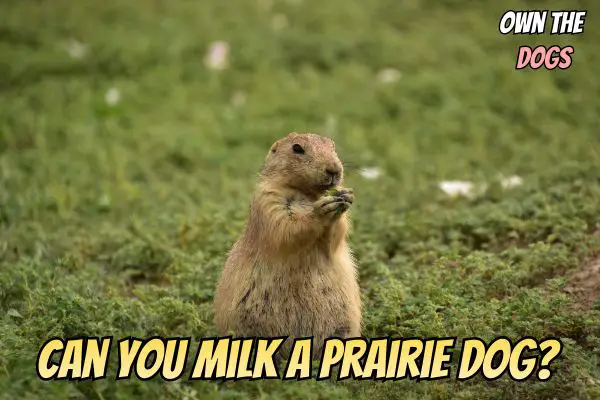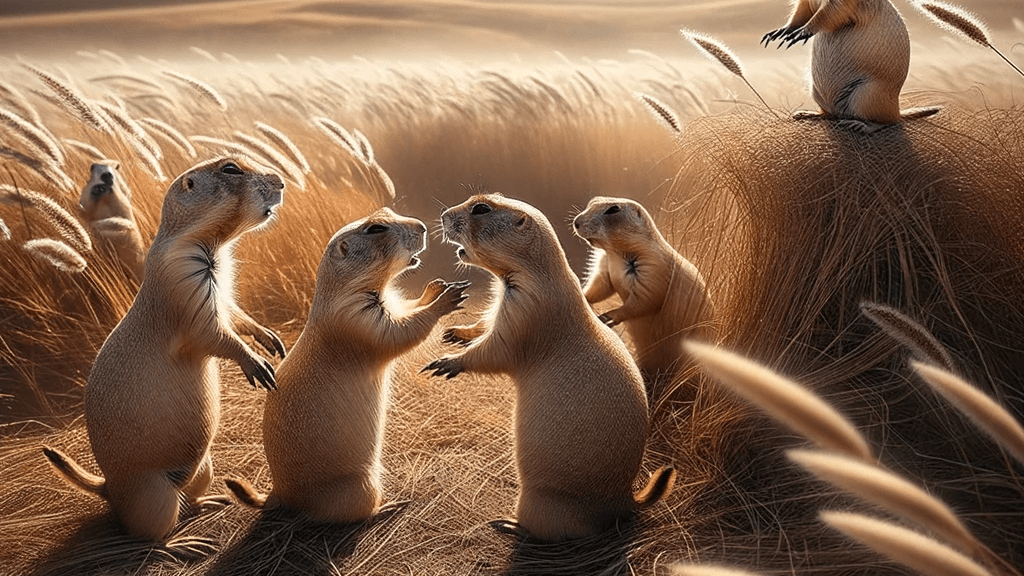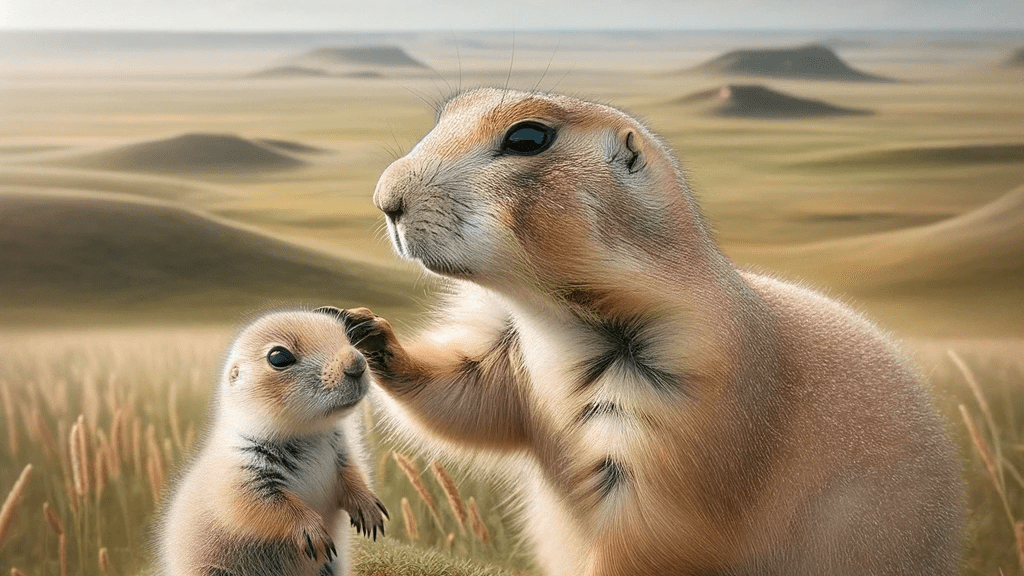Ever scratched your head over a weird question? “Can you milk a prairie dog?” is definitely a head-scratcher! But hey, it’s not just a quirky question – it’s a gateway into the captivating world of prairie dogs and the myths that surround them.
Prairie dogs, those cute, burrowing critters dotting North America’s landscapes, often pop up in curious questions and tales. Known for their friendly “kisses” and tight-knit social circles, prairie dogs have a charm that captures our attention. But milk-producing prairie dogs? That’s a new and intriguing concept!
In this article, we’ll hop across the prairie dog’s grassy homes, peek into their non-milk-producing biology, and tackle the milking myth with a dash of science and a sprinkle of fun. We’re not just debunking myths about prairie dogs but also taking a wild ride through other animal tales, exploring their roots, and shining a light on the facts.
Key Takeaways
- Unveiling the Milking Myth
- Biological Insights into Prairie Dogs
- Navigating Through Myths and Misinformation
- Exploring Rodent Myths and Realities
- Upholding Informed and Respectful Curiosity
- Embarking on Continued Explorations
Why Dive Into Prairie Dog Myths?
Getting to know our furry prairie dog friends means stepping into a world of accurate info and waving goodbye to myths. Even the smallest myth can ripple into big misunderstandings, shaping how we see and safeguard our wildlife. By busting prairie dog myths and more, we’re stepping towards curious, informed exploration, smart sharing of info, and better care for our wild buddies.
Hop Along on This Prairie Dog Adventure!
Ready to jump into a world where prairie dog myths get busted and facts shine through? Got other animal myths you’re itching to explore? Share, explore, and stay tuned as we dig into the wild, wonderful world of prairie dogs and beyond, always with a hearty dose of science and a spirit of adventure.
Prairie Dogs at a Glance
Prairie dogs, despite their name, are not dogs at all! These adorable rodents inhabit the vast prairies of North America, creating intricate burrow systems that become bustling underground towns. But what makes prairie dogs so captivating, and why do myths like milking prairie dogs even pop up?
A Peek into the Prairie Dog’s World
Prairie dogs are social animals, living in groups known as “towns” or “coteries.” These tight-knit family units consist of a male, a few females, and their pups. Communication is key in prairie dog towns, with various calls and signals, like their iconic “jump-yip” display, keeping everyone informed and alert.
Diet and Lifestyle: Not a Milk Bottle in Sight!
Prairie dogs primarily munch on grasses, plants, and the occasional insect, ensuring their ecosystem stays balanced. Their diet and lifestyle are far from those of typical milk-producing animals, making the concept of a milking prairie dog quite the imaginative leap!
The Prairie Dog’s Impact on the Prairie
Prairie dogs are considered a keystone species, meaning they play a crucial role in maintaining the health and balance of their ecosystem. Their burrowing activities aerate the soil, and their grazing promotes plant diversity, supporting a range of wildlife, from birds to bison.
Why the Milking Myth is a Misstep
Understanding the prairie dog’s biology and lifestyle helps us see why the milking myth misses the mark. Without the physical capability to produce milk and with a diet and lifestyle vastly different from dairy animals, prairie dogs bring us back to the drawing board, prompting us to explore and understand them on a deeper, fact-based level.
The Biological Perspective
When we dive into the biology of prairie dogs, we find a world where milk production simply isn’t on the agenda. But why is that? Let’s explore the biological aspects of prairie dogs that explain why milking them is purely a myth.
A Closer Look at Prairie Dog Parents
Prairie dog moms are dedicated parents, nurturing their pups with utmost care. However, unlike some mammals, prairie dogs don’t have a milk-producing system. Their pups are weaned on the nutritious plants available in their prairie homes, ensuring they grow and thrive in their bustling communities.
Mammary Glands: The Milk-Producing Marvel
Mammary glands, the milk-producing organs, are absent in prairie dogs, making the notion of milking them scientifically impossible. In contrast, animals like cows and goats have developed mammary glands to nourish their young with milk, showcasing a stark difference in reproductive strategies and offspring care.
Prairie Dog Pups: Growing Up on the Prairie
Prairie dog pups navigate through their early days without a drop of milk. After birth, they remain in the safety of the burrow for about six weeks, emerging as independent, plant-munching youngsters, ready to explore the vast prairie alongside their prairie dog family.
Why Milk Myths Don’t Match Prairie Dog Biology
Understanding prairie dog biology, from their reproductive system to their parenting strategies, helps us debunk the milking myth and appreciate them for the unique creatures they are. Their biology is tailored to their environment, ensuring survival and success on the prairies without the need for milk.
Debunking Myths with Science
Embarking on a journey through the myths surrounding prairie dogs, we find ourselves entwined in tales that spark curiosity yet drift away from scientific truths. The notion of milking a prairie dog, while whimsically amusing, is a myth that dissolves under the microscope of biology and science.
The Roots of the Milking Myth
Prairie dogs, with their herbivorous diet and absence of mammary glands, stand far from the realm of milk production. The myth perhaps sprouted from the fertile grounds of curiosity and imagination, where peculiar questions bloom into even more peculiar tales.
Science as Our Compass
But science gently nudges us towards reality, unraveling the threads of myth and guiding us towards understanding and appreciation of the prairie dog’s true nature. As we continue to explore, we’ll unearth more myths, always with science as our compass, navigating through the enchanting yet factual world of prairie dogs and their fellow creatures.
The Impact of Misinformation
Misinformation, even in the seemingly harmless form of animal myths, can ripple through our understanding and interaction with the natural world. The milking prairie dog myth, while quirky and seemingly innocent, is a small pebble that creates ripples in the pond of wildlife understanding and conservation.
Consequences in the Real World
Believing in myths can alter our perceptions and interactions with animals like prairie dogs. It might lead to misconceptions about their biology, lifestyle, and conservation needs, potentially impacting policies and public opinion about these fascinating creatures and their habitats.
The Responsibility of Accurate Knowledge Sharing
Accurate information is not just a tool but a responsibility. By ensuring that our knowledge and sharing about prairie dogs and other wildlife are rooted in scientific facts, we contribute to building a foundation of understanding and respect towards our natural world.
Towards Informed Curiosity and Conservation
Understanding the true biology and lifestyle of prairie dogs is crucial. It allows us to genuinely appreciate them. It also helps us contribute more effectively to conservation efforts. This understanding enables us to navigate through myths with a discerning eye. Thus, our curiosity and explorations always align with truth and understanding.
Exploring Related Rodent Myths
The myth of milking prairie dogs is just one tale. It is among a myriad of rodent myths. These myths weave through our collective understanding. Rodents have a widespread presence. They also have diverse species. Often, they become the protagonists in various tales. These tales blur the lines between fact and fiction.
Unveiling Other Rodent Tales
From flying squirrels to capybaras, rodent myths abound. Some even say capybaras can control the weather. The world of rodent myths is vast and varied, much like the species themselves. Each myth offers a glimpse into our imaginative capacities. Additionally, they provide opportunities to explore and understand these creatures’ actualities.
The Reality Behind the Myths
Peeling back the layers of these myths reveals fascinating truths about rodents. These truths can be as enchanting as the tales themselves. For instance, prairie dogs can’t be milked. However, their complex social structures and communication systems are marvels of nature. They showcase an intricate and intelligent side to these creatures.
Appreciating Rodents Beyond the Myths
Understanding rodents in their true light, beyond the myths, allows us to appreciate their genuine contributions to our ecosystems. From prairie dogs maintaining the health of prairies to beavers creating habitats with their dams, rodents play crucial roles that deserve recognition and conservation efforts.
Conclusion: Can You Milk a Prairie Dog?
Our journey through the prairies, exploring the world of prairie dogs and debunking the milking myth, has been a fascinating adventure. We’ve navigated through the intricate biology, social structures, and various myths surrounding these enchanting rodents, uncovering truths that are as captivating as the tales themselves.
Prairie dogs, with their complex societies, communication systems, and crucial role in maintaining the ecosystem, emerge as creatures worthy of admiration and conservation. Understanding them beyond the myths allows us to appreciate their genuine contributions and ensures that our interactions and conservation efforts are informed and effective.
While myths and imaginative tales have their place in sparking curiosity, it is through responsible research and fact-based understanding that we truly honor and protect the natural world. Let’s continue to explore, question, and learn, ensuring that our curiosity always walks hand in hand with truth and respect.
Frequently Asked Questions (FAQs)
What Do Prairie Dogs Eat?
Prairie dogs primarily have an herbivorous diet, feeding mainly on grasses, roots, leaves, and other vegetation found within their habitat.
How Do Prairie Dogs Communicate?
Prairie dogs communicate through a complex system of vocalizations and physical signals. They have different calls to alert their colony about the type and direction of an approaching predator.
Are Prairie Dogs Good Pets for Beginners?
Prairie dogs are not recommended for first-time pet owners due to their specialized care requirements and social needs. They are highly social animals and thrive when kept in pairs or small groups.
What Should I Know About the Diet and Feeding of Pet Prairie Dogs?
Prairie dogs in captivity should have a diet rich in high-quality hay, commercial pellets, fresh vegetables, and occasional fruits. Fresh water should always be available.
Do Prairie Dogs Require Special Housing or Enclosures?
Yes, prairie dogs require a large, multi-level cage with tunnels and enriching items. Wire-bottom cages should be avoided, and soft bedding materials should be provided.
What are the Social and Behavioral Needs of Pet Prairie Dogs?
Prairie dogs need daily interaction and socialization. They form strong bonds with their owners if properly socialized and are happier when kept in pairs or groups.
How Do Prairie Dogs Impact Their Ecosystem?
Prairie dogs are considered a keystone species, playing a crucial role in maintaining the health and balance of their ecosystem. Their burrowing activities aerate the soil, and their grazing promotes plant diversity, supporting various wildlife.
Is the Utah Prairie Dog a Unique Species?
The Utah prairie dog, one of the prairie dog species found in North America, exhibits its own unique characteristics and holds a distinct conservation status.


